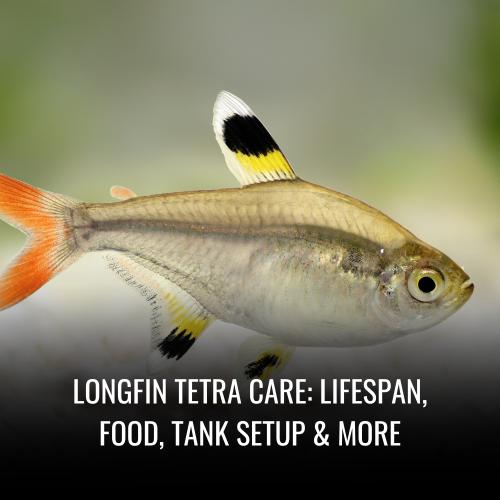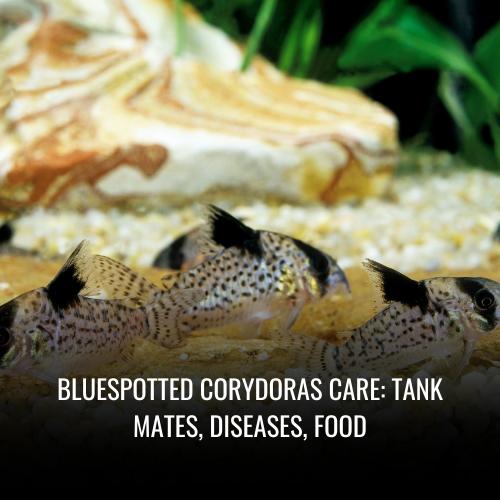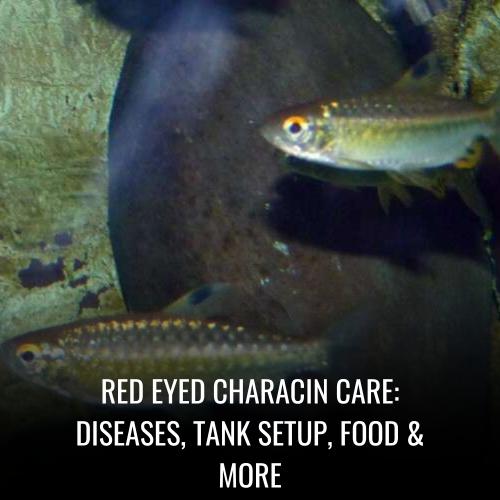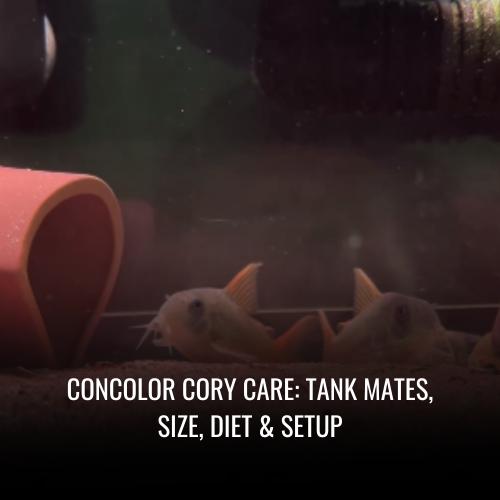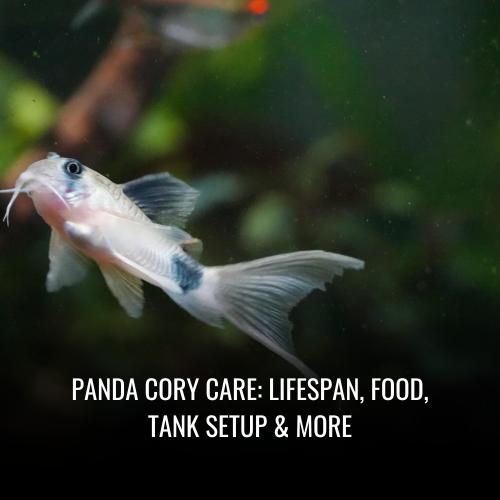Freshwater garfish Care: Lifespan, Food, Tank Setup & More
This post contains affiliate links. As an Amazon Associate, we earn from qualifying purchases.
Caring for the Freshwater Garfish is relatively straightforward. They adapt well to various tank conditions and feed on a natural diet similar to their wild counterparts. These fish hail from diverse freshwater bodies, appreciating a setup that mimics their natural habitats, typically calm and shallow waters.
Below is a concise table with crucial information for potential keepers of this striking species.
| Feature | Freshwater Garfish Details |
|---|---|
| Scientific Name | Xenentodon cancila |
| Common Name | Freshwater Garfish, Asian Freshwater Needlefish |
| Family | Belonidae |
| Usual Size in Fish Tanks | Up to 16 inches (40 cm) |
| Recommended pH Range | 7.0 – 8.0 |
| Recommended Water Hardness (dGH) | 8 – 12°N |
| Recommended Temperature | 72° – 78°F (22° – 26°C) |
| Reproduction | Egg-laying |
| Origin | Southeast Asia |
| Temperament (Own Species) | Sociable |
| Temperament (Other Fish) | Timid |
| Usual Place in Tank | Middle to Top Level |
| Lifespan | Up to 10 years |
| Tank Size Requirement | Minimum 55 gallons |
| Filtration System | Required |
| Sexual Dimorphism | Minimal |
| Substrate Cleaning | Not Necessary |
Adopting a Freshwater Garfish into your aquarium immerses you into a world where the sight of elongated, darting figures is the norm, and peaceful coexistence is celebrated.
Scientific Name
The biological world is teeming with a vast array of species, each uniquely classified using a system known as binomial nomenclature—more commonly recognized as the scientific name. This form of labeling is precise, distinct to each species, and universally acknowledged across the scientific community. It eradicates any ambiguity that may arise from the myriad of common names attributed to organisms worldwide.
The structure of a scientific name is meticulously crafted. It starts with the genus name, capitalized, followed by the specific epithet, in lowercase—both are italicized when typed or underlined when handwritten. For instance, in the scientific name Xenentodon cancila, Xenentodon signifies the genus, while cancila is the species identifier.
Derived from Latin or Greek origins, these names often depict key attributes or the natural habitat of the organism. The use of this system ensures uniformity and clarity among scientists, allowing detailed discourse without any loss in translation or understanding.
| Criteria | Description |
|---|---|
| Binomial Nomenclature | Two-part unique naming system for species |
| Genus Name | Capitalized first part of the scientific name |
| Specific Epithet | Lowercase second part of the scientific name |
| Formatting | Italicized when typed, underlined when handwritten |
| Origin | Latin or Greek |
| Purpose | Universal clarity in biological classification |
Precision in communication is critical, and the adoption of scientific names serves this purpose within the mosaic of biological sciences.
Average Size
The fascinating realm of freshwater garfish boasts species ranging from large to impressively elongated. Among them, the Needle Nose Gar strikes a remarkable presence with an average length of 15.8 inches (40.01 cm), making it a sizable inhabitant of freshwater ecosystems. The Longnose Gar, Lepisosteus osseus, dives deeper into grandeur, commonly reaching lengths between 2 ½ to 3 feet and tipping the scales around 4 pounds. Astonishingly, the South Carolina State Record for this species is a hefty 25 pounds 6 ounces.
Not to be overlooked, the graceful Reedfish ordinarily attains an adult length of 30 cm (11.8 inches), with some individuals stretching out to 37 cm (14.6 inches). As for longevity, the Longnose Gar displays enviable vitality, living for an average of 17-20 years in their aquatic realms.
Aquarium enthusiasts with a penchant for these intriguing creatures should note the Needle Nose Gar’s spatial requirements; a minimum tank size of 55 gallons (208 liters) is essential to ensure a healthy and dynamic environment for this species to thrive.
| Species | Average Size (Length) | Average Weight | Tank Size |
|---|---|---|---|
| Needle Nose Gar | 15.8 inches (40.01 cm) | Not Specified | 55 gallons (208 L) |
| Longnose Gar | 2 ½ – 3 feet | 4 pounds | — |
| Reedfish | 11.8 – 14.6 inches (30 – 37 cm) | Not Specified | — |
These dimensions serve as a guide to understanding the average sizes and aquarist requirements for these striking members of the freshwater garfish family.
Lifespan
When delving into the lifespans of different gar species, the longevity of these fish is quite intriguing. Longnose gars, for instance, can live up to 20 years, although males typically live shorter lives, rarely exceeding 11 years. Females, on the other hand, have the potential to surpass 20 years. Needle Nose Gars in captivity generally enjoy a lifespan ranging from 3 to 5 years. However, with optimal care, these fish have been known to thrive for over 8 years. The Shortnose Gar is another example of longevity, with an expected lifespan of 20 years, growing to lengths of 24–35 inches and reaching weights up to 5 pounds.
An interesting ecological interaction involves Longnose Gar eggs and larvae. They are often found in the nests of smallmouth bass, where the male bass provides protection to both its own offspring and the young gars. Adding to the early life wonders, newly hatched Needle Nose Gars are equipped with an adhesive disc on their snouts, which they use to anchor themselves to submerged plants until they are ready to fend for themselves.
| Species | Lifespan | Notes |
|---|---|---|
| Longnose Gar | Up to 20 years | Males < 11 years, females > 20 years |
| Needle Nose Gar | 3-8 years | Longer in optimal conditions |
| Shortnose Gar | Up to 20 years | — |
This table outlines the average lifespans of various freshwater gar species, highlighting their potential longevity and early life behaviors.
Natural Habitat
The natural habitats of freshwater gars like the longnose gar and the spotted gar are as diverse as their diets and behaviors. The longnose gar, known scientifically as Lepisosteus osseus, is often found in clearer, shallow waters that are 3–5 meters deep. These waters are typically adorned with ample foliage, which offers the gars shelter and hunting grounds. Their habitats extend to various large water systems, including Lake Michigan, the Lake Erie Basin, the Mississippi River System, and along the northern Gulf of Mexico—from the Nueces River in Texas to Florida’s lower Apalachicola River.
Gars uniquely breathe using their air bladder as a lung, a survival adaptation especially noticeable in warm weather as they surface, beaks breaching the water, to gulp in air.
| Species | Preferred Habitat | Water Conditions |
|---|---|---|
| Longnose Gar | Clear, shallow (3-5m) waters with foliage | Clean with plant cover |
| Shortnose Gar | Slow-moving rivers, ponds, large freshwater bays | Tolerant of turbid water |
| Spotted Gar | Shallow, slow-moving water with mud, sand, gravel | Clear to turbid |
This table captures a snapshot of the diverse environments gars call home and illustrates their remarkable adaptability to various water conditions.
Appearance
The longnose gar, Lepisosteus osseus, boasts a distinctive appearance that sets it apart from other freshwater species. Its most striking feature is the elongated, beak-like jaw lined with an array of sharp teeth, optimized for capturing prey. This cylindrical fish is sizeable, commonly reaching lengths between 2 to 3 feet, which underlines its presence in aquatic environments.
Positioned near the end of its body are the dorsal and anal fins, characteristically located close to the large, rounded tail fin. Notably, male longnose gars display a hint of sexual dimorphism with anal and dorsal fins edged in black, adding to the distinct characteristics of the species.
| Feature | Description |
|---|---|
| Body Shape | Long, cylindrical |
| Jaw | Elongated with sharp teeth |
| Scales | Large, bony, sharp |
| Length | Typically 2 to 3 feet |
| Coloration | Brownish olive to white gradient |
| Fin Placement | Dorsal and anal fins set close to the tail |
| Sexual Dimorphism | Males have anal and dorsal fins with black edges |
The table encapsulates the physical traits of the longnose gar, painting a picture of this fascinating freshwater predator.
Behavior & Temperament
Understanding the behavior and temperament of the Freshwater Garfish, or Silver Needlefish, is vital for those who look to introduce these sleek, needle-nosed swimmers into an aquarium setting. These fish are known for their social nature and peaceful disposition. They are not typically aggressors in the tank, displaying calm coexistence with one another and other non-aggressive fish species.
It’s crucial to recognize that the factors influencing their behavior extend beyond genetics to the conditions within their environment. Providing optimal water conditions, compatible tank mates, and adequate space will play a significant role in maintaining the Freshwater Garfish’s tranquil temperament.
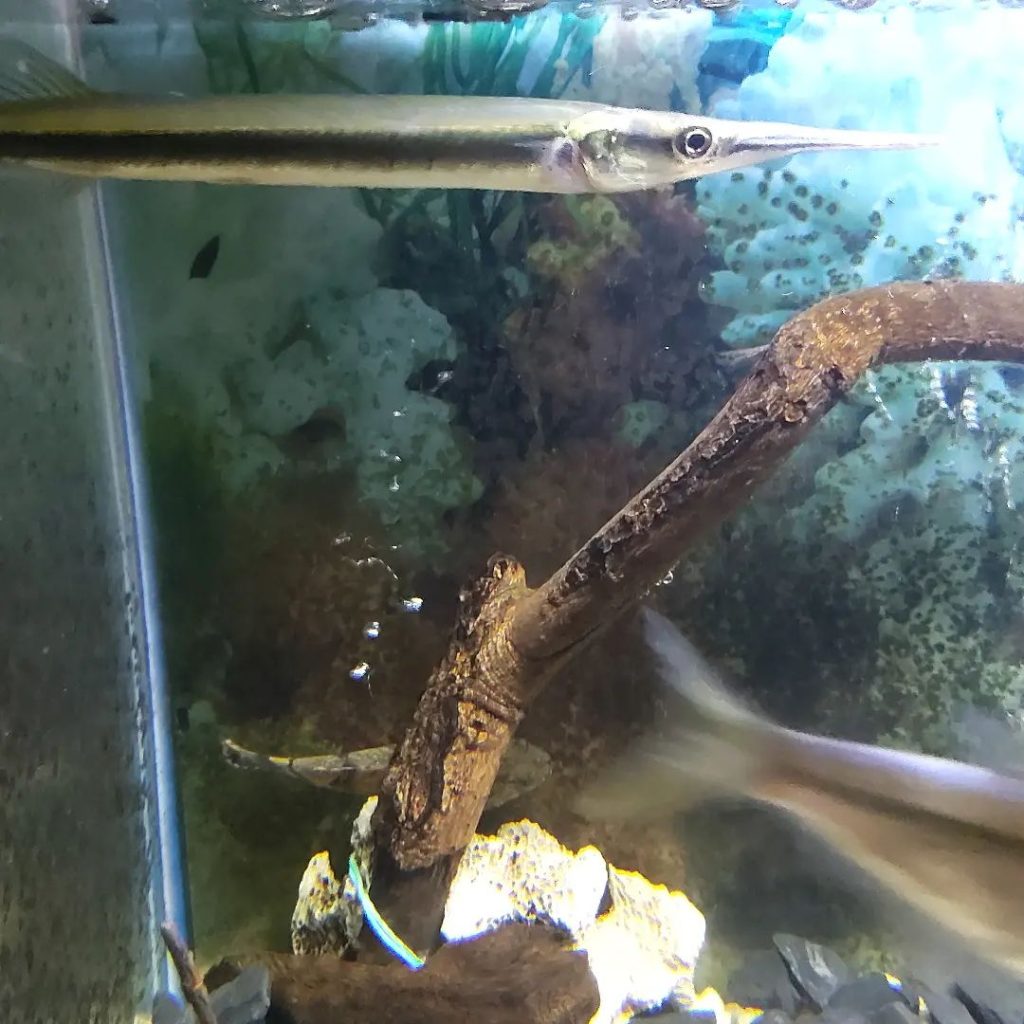
Are Freshwater Garfish Fin Nippers?
Freshwater Garfish have a reputation for being gentle despite their predatory lineages. They are typically not fin nippers and coexist peaceably with other tank occupants. However, careful consideration of tank mate compatibility is always recommended, as they do require live prey for feeding. Selecting fish that do not provoke or match the Fin Nipper profile ensures a harmonious aquatic habitat.
Are Freshwater Garfish Aggressive To Each Other & Other Fish?
These slender fishes, which bear rows of sharp teeth meant for seizing live meals, are surprisingly non-aggressive. Their social structure tends to be more about community and schooling, rather than confrontation. This amiable behavior extends to their interactions with other fish, making them unlikely to initiate aggression and highly suitable for a community aquarium.
Are Freshwater Garfish Friendly To Each Other & Other Fish?
Indeed, Freshwater Garfish display a friendly attitude towards their species and other freshwater companions. They prefer the company of their kind, being more at ease in a collective group where stressful encounters are minimal. Their friendly nature is conducive to a peaceful aquarium life, and they very rarely use their sharp teeth against tank mates.
Are Freshwater Garfish Schooling Fish?
Freshwater Garfish exhibit schooling behavior, thriving best when in groups. This social inclination is a testament to their wild behavioral patterns, where they are often spotted swimming in unison. Schooling not only reduces stress but also emulates their natural living conditions, allowing for more authentic behaviors and social dynamics to surface in captivity.
Can You Have Just One Freshwater Garfish in The Tank?
While it is physically possible to keep a single Freshwater Garfish, it is not advisable as they are naturally schooling fish. A solitary gar may exhibit signs of stress and anxiety due to isolation. For the well-being and balanced behavior of these fish, a group setting is recommended to adequately reflect their wild societal patterns.
Do Freshwater Garfish Need To Be In Groups?
A resounding yes, Freshwater Garfish prefer and, in fact, require group living to fully express their social, schooling nature. In groups of three or more, they display more relaxed and natural behaviors, which contributes to an overall healthier life in an aquarium environment. Ensuring that they are in an appropriate-sized group mitigates stress and enables them to exhibit their true, peaceful temperament.
By respecting the social requirements and peaceful nature of the Freshwater Garfish, aquarists can create an environment that is not only physically suitable but also psychologically supportive, fostering a thriving community within the aquarium.
Food & Diet
Freshwater Garfish, Lepisosteus osseus, and related species like the alligator gar, are remarkable members of the bony fishes with a diet quite fitting of their predatory nature. Largely carnivorous, these freshwater inhabitants possess an elongated body and a jawline brimming with needle-like teeth designed for a diet that includes smaller fish, amphibians such as frogs, crustaceans, and a variety of insects.
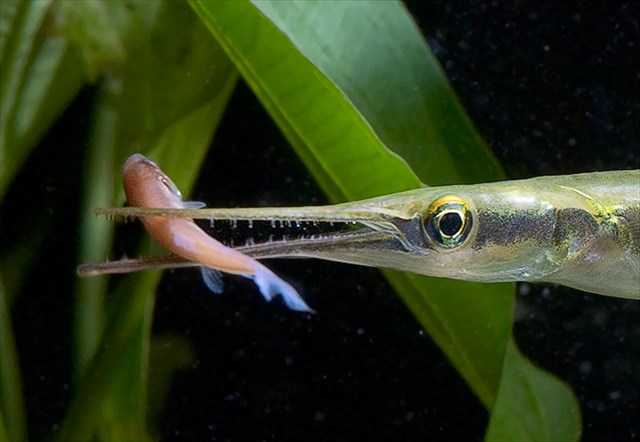
Do Freshwater Garfish Eat Algae?
It is a common misconception that the longnose gar and its kin, given their aquatic habitat, may consume algae. However, this is not the case. Freshwater Garfish do not seek out algae as food due to their strictly carnivorous dietary habits. Their specialized mouth shape and sharp teeth facilitate the hunting and consumption of live prey, rather than the grazing of plant matter like algae.
Do Freshwater Garfish Eat Shrimp?
Indeed, shrimp form a part of the Freshwater Garfish’s natural diet. These fish thrive on live foods, and shrimp, being meaty and full of nutrients, are an excellent choice for their captive dietary regimen. In an aquarium setting, garfish can be conditioned to accept frozen or defrosted shrimp as well, although it’s crucial to observe quarantine practices with live feeder shrimp to protect your tank’s health.
Do Freshwater Garfish Eat Bloodworms?
Bloodworms are another suitable dietary inclusion for these predators. The larvae of midges and bloodworms offer a rich source of protein that is beneficial to Freshwater Garfish. Introducing bloodworms to a garfish’s diet in an aquarium can supplement their nutritional intake and provide variety, though bloodworms must be only one component of a diverse and balanced diet.
Do Freshwater Garfish Eat Mosquito Larvae?
Freshwater Garfish are opportunistic feeders that will indeed consume mosquito larvae with gusto. This penchant for preying on mosquito larvae actually makes them valuable for biological control in bodies of water where mosquitoes breed. In the wild, garfish contribute significantly to controlling mosquito populations, while in a home aquarium, they can continue to do the same, if conditions allow for the presence of larvae.
Do Freshwater Garfish Eat Planaria?
While the Freshwater Garfish diet concentrates on more substantial prey, they might occasionally ingest small invertebrates such as planaria, especially when their preferred diet of fish and insects is scarce. It is not a deliberate dietary choice; rather, planaria might be consumed incidentally during the garfish’s typical feeding activities.
Do Freshwater Garfish Eat Plants?
Dispelling another myth, Freshwater Garfish do not feed on plants. Their consumption of plant matter is likely accidental and nominal while pursuing live animal prey. These fish are designed to thrive on a wholesome carnivorous diet and lack the dentition or digestive apparatus to process plant material as a reliable food source.
In maintaining a healthy diet for Freshwater Garfish in captivity, aquarists should create a feeding regimen that echoes the variety and high protein content these fish would encounter in the wild, thus promoting their well-being and vigor. Considered a fascinating species among aquarium fish enthusiasts, these ancient creatures, also referred to by common names such as “Alligator Gar” or “Longnose Gar,” require a diet that aligns with their predacious nature, whether they reside in shallow waters of the United States or in an enthusiast’s tank. Offering a diet that includes appropriately sized prey will keep these freshwater fishes, sometimes termed “Pocket-sized Pikes.bTropical Fish Hobbyist,” in prime condition, helping them stand out as a captivating and popular aquarium fish.
Sexing: Male vs Female
Identifying male and female Longnose Gar, Lepisosteus osseus, is quite straightforward, particularly during the spawning season. Here’s a brief overview:
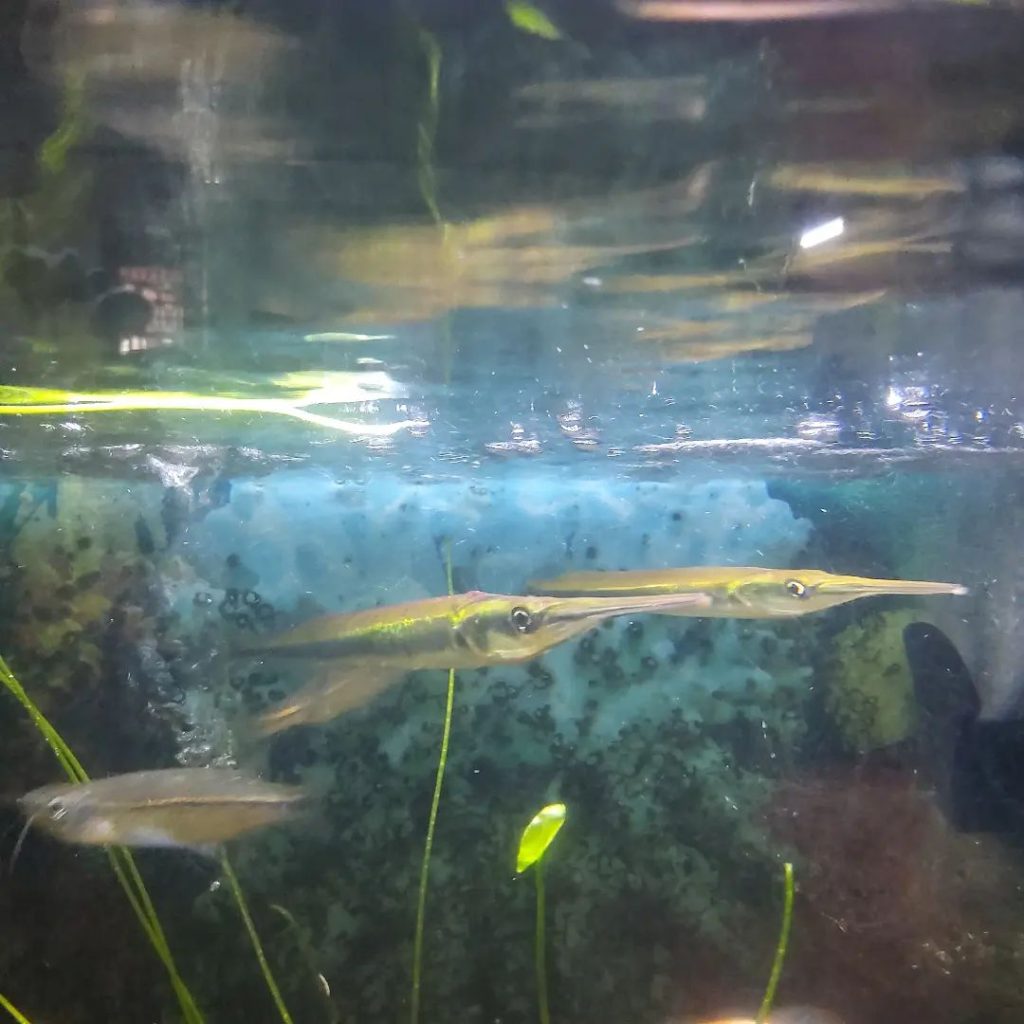
- Size Difference: Females are invariably much larger than males, providing a clear visual cue.
- Spawning Behavior: Pay close attention to behavior. A female will either rest on a riffle or slowly roam around a nearby pool, accompanied by one to several smaller males.
- Spawning Ratio: There’s a higher number of males than females in the spawning areas, so if you spot a group, chances are the largest one is the female.
- Egg Deposition: Females don’t release all their eggs in one go. Observing repeated spawning at irregular and sporadic intervals typically indicates a female.
Remember, size and spawning conduct are reliable indicators when discerning between male and female Longnose Gars. Keep the observations non-intrusive to prevent disrupting their natural spawning behavior.
| Gender | Size | Behavior During Spawning |
|---|---|---|
| Female | Larger | Lies on riffle or cruises, accompanied by males |
| Male | Smaller | Outnumber females, accompany and assist females |
Freshwater garfish Tank Mates
Freshwater garfish, with their elongated bodies and sharp-toothed grins, may seem intimidating, but they are in fact quite sociable among their own kind and with other peaceful fish. To ensure a harmonious aquarium, it’s best to keep garfish in schools of at least three, as they are timid by nature. Their tank mates should be chosen with care to match the garfish’s non-aggressive and schooling tendencies.
Ideal companions are similarly sized, peaceful community fish – think small tetras, danios, rasboras, and guppies. Such species not only share a calm demeanor but also won’t see the garfish as a threat. Bottom dwellers, like the corydoras catfish and small plecos, offer a great dynamic to the tank as they share different water column levels without conflict. Additionally, non-territorial mid-level swimmers, such as angelfish or dwarf gouramis, could be considered good neighbors due to their tranquil nature.
However, care should be taken to avert any mix with fin nipping or aggressive species, as the freshwater garfish’s slender form and delicate fins make them prone to harm. Furthermore, avoid very small fish that might fit into the garfish’s predatory diet.
| Ideal Tank Mate | Compatibility | Reason |
|---|---|---|
| Small Tetras | High | Peaceful; swim in different zone |
| Danios | High | Schooling; non-aggressive |
| Small Plecos | High | Peaceful; bottom dwellers |
| Corydoras Catfish | High | Non-territorial; bottom dwellers |
| Dwarf Gouramis | Moderate (with caution) | Peaceful; share water column |
| Angelfish | Moderate (with caution) | Non-aggressive; similar size |
Steer clear of tank mates that can fit into a garfish’s mouth or those with a propensity for aggression to maintain a stress-free environment for these serene, cylindrical fish.
Aquarium Setup
Aquarium enthusiasts who decide to keep the fascinating Freshwater Garfish, known by their scientific name Lepisosteus osseus in the case of the longnose gar, will need to pay close attention to their aquarium setup to ensure the health and well-being of these ancient fish. Often admired in the aquarium trade, garfish are a species of bony fishes known for their cylindrical shape and elongate bodies, complete with bony scales and dark spots that make them a visually striking addition to any large tank. Here, we will discuss the essential components of an aquarium suitable for housing your Freshwater Garfish, from the dimensions of the tank to the water parameters and more.
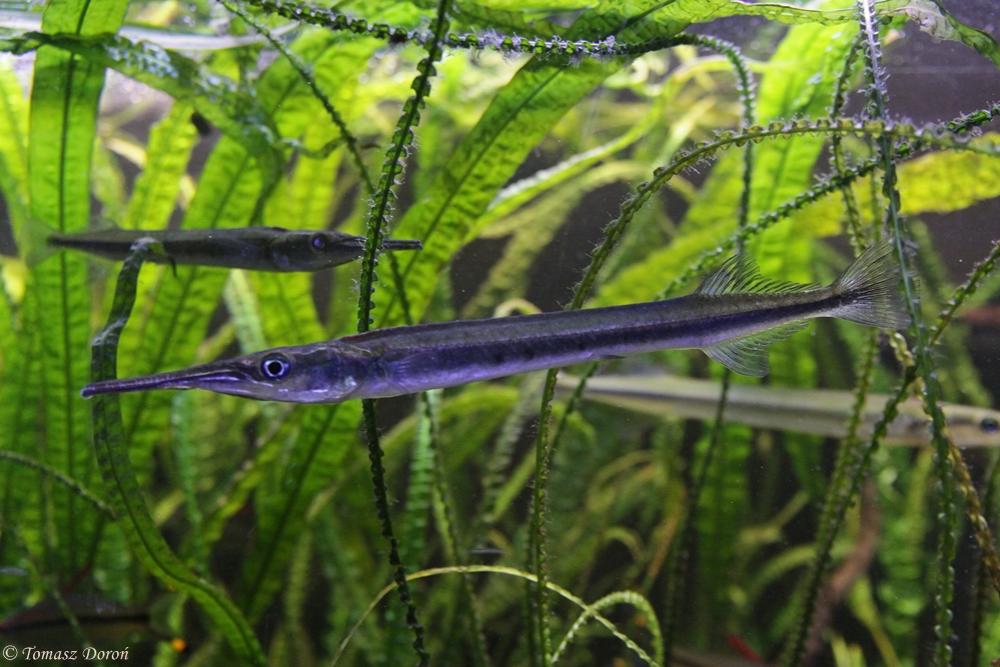
Ideal Tank Size
Given that Freshwater Gar, including the alligator and longnose varieties, can reach significant lengths of around 12 inches (30 cm) in captivity, a sizeable aquarium is a must. A minimum of 55 gallons (208 liters) is often recommended, but larger is better to accommodate their size and active swimming habits. A tank length of at least 48 inches is ideal to allow your gar ample space to navigate their environment. Such spacious conditions play a vital role in minimizing stress and curbing any potential aggressive tendencies that might arise in cramped conditions. The more substantial volume of water also aids in maintaining high water quality and simplifies the task of managing the necessary water parameters crucial for the health of these freshwater fishes.
Ideal Water Parameters
Creating a hospitable aquatic environment means adhering to a set of optimal water conditions. For the Freshwater Garfish, the tank water should have a pH level of around 6.5 to simulate an acidic habitat in line with their natural preferences. A dH level between 12-15 is appropriate for delivering the mineral content needed. It’s essential to maintain a stable temperature ranging from 77 to 81 degrees Fahrenheit to provide the Freshwater Gar with conditions conducive to their well-being and, if breeding is a goal, to facilitate successful spawning.
Filtration
As part of the tank setup, a robust filtration system is vital to ensure a clean and healthy living space for your gars. The chosen filtration method should be capable of handling the size of the tank and the waste produced by larger fish like the Freshwater Gar. The filtration process effectively separates solid waste and other particulate matter from the tank water, promoting a balanced and contaminant-free environment. It’s important to select the right type of filtration — be it mechanical, chemical, or biological — to align with the specific needs of your aquarium setup and the species you’re housing.
Lighting
Lighting serves a dual purpose in the aquarium: it showcases the Freshwater Gar’s unique features, and it’s vital for the overall ecosystem within the tank, including any live plants. The selection of artificial lighting should be based on the specific requirements of your aquarium, considering factors such as color temperature and the potential for daylighting if the tank is positioned in a space that receives natural light. It’s critical to ensure that the lighting setup does not contribute to excessive temperature fluctuations within the tank, as this could agitate and stress these often calm, freshwater fishes. A well-planned lighting setup not only enhances the aesthetic appeal of the aquarium but also promotes the health of its inhabitants by simulating their natural light cycles.
With a careful approach to tank size, water quality, filtration, and lighting, aquarists can create an ideal environment that supports the thriving life of their Freshwater Garfish, making these prehistoric-looking creatures a popular and mesmerizing addition to the home aquarium.
Common Possible Diseases & Prevention
Ensuring the health of Freshwater Garfish like the Needle Nose Gar begins with prevention. A stress-free environment and a balanced diet mimicking their natural ecosystem are the first lines of defense against disease. Be on the lookout for telltale signs of illness, as early detection can significantly increase treatment success and maintain your gar’s wellbeing.

Common Diseases and Symptoms:
- Ichthyophthirius (Ich): White spots on skin, gills, and fins
- Fin Rot: Frayed or disintegrating fins
- Fungal Infections: Cotton-like growths
- Bacterial Infections: Ulcers, discolored scales
Prevention Tips:
- Proper Environment: Recreate natural habitat conditions.
- Balanced Diet: Provide a variety of nutrients.
- Regular Monitoring: Observe for abnormal behavior or appearance.
- Quarantine New Fish: Always quarantine new additions to prevent the spread of unseen ailments.
By constructing a habitat that mirrors their natural environment and rigorously maintaining tank health, you can vastly reduce stress and the risk of illness in your Freshwater Garfish. Regular observation and swift action are key to preventing disease from taking a toll on your aquatic pet.
Breeding Freshwater Garfish in Aquarium
Breeding freshwater garfish, such as the Longnose Gar (Lepisosteus osseus) or Alligator Gar, presents unique challenges due to their habitat needs and behaviors. Aquarists aiming to breed these cylindrical fish must replicate specific conditions within their tanks for success.
Key Breeding Steps:
- Provide Spawning Area: Equip the tank with fine-leaved plants or a spawning mop to serve as a substrate for egg scattering.
- Egg Isolation: After spawning, transfer the eggs from the communal tank to a separate rearing tank for safety.
- Monitor Conditions: Keep an eye on water parameters to ensure optimal conditions for egg and larvae development.
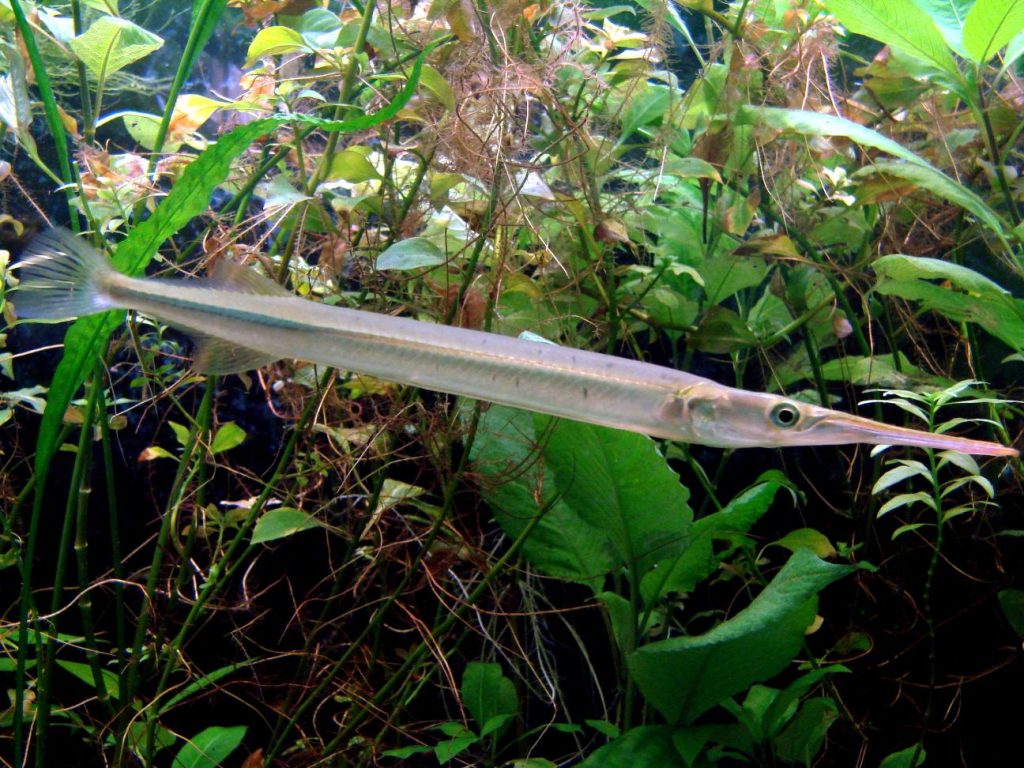
Breeding these bony fishes is indeed complex and requires a high level of care. Yet, for the dedicated aquarist, the process can be incredibly gratifying. It’s important to note that not just the Longnose Gar, but other species like the Silver Needlefish or South American pike characins follow similar spawning behaviors.
Success in breeding Freshwater Garfish is a testament to a hobbyist’s expertise, showcasing a commitment to understanding and replicating the delicate balance of nature within the confines of an aquarium.
Are Freshwater Garfish Easy To Keep?
Keeping Freshwater garfish, also known as Silver Needlefish or Needle Nose Gar, can be fairly straightforward for those experienced with maintaining stable aquarium environments. Despite their appearance, complete with a mouthful of sharp teeth, these fish are not the fearsome predators they might seem. Freshwater garfish are relatively docile and often coveted by aquarists for their unique body shape and interesting behavior.
They are schooling fish and do best when kept with companions, preferably in groups of three or more, to help maintain a stress-free environment. Freshwater garfish are not inclined towards aggression, making them a peaceful addition to a well-suited community aquarium. It’s worth noting that these creatures are considered a legal alternative to true gars—like the Longnose Gar (Lepisosteus osseus) and Alligator Gar—which are prohibited in some regions.
But while they may be less demanding in terms of social interactions, the Freshwater garfish requires diligent care when it comes to their tank conditions. They thrive when their habitat closely mirrors their natural ecosystem, which encompasses vast stretches of water across South and Southeast Asia. Therefore, while they are generally easy to care for considering their temperament, ensuring their environmental needs are met is crucial.
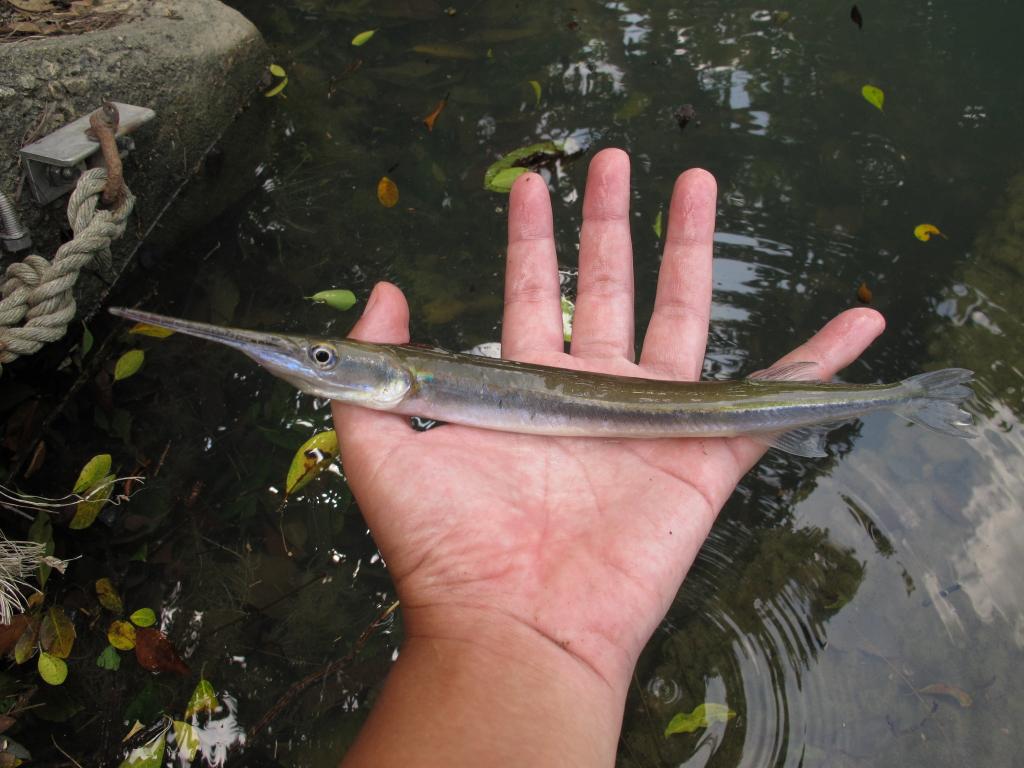
Are Freshwater Garfish Sensitive To Water Changes?
Freshwater garfish, known for their schooling behavior and elongated bodies, display a strong sensitivity to changes in their aquatic surroundings. Their well-being is closely tied to consistent and stable water parameters. The stability of the water temperature, pH levels, and overall quality has a profound effect on these slender fish.
Abrupt shifts in the water conditions can lead to stress, which not only diminishes their natural vibrancy but can also impact their health negatively. Because of this, aquarists need to approach the maintenance of a Freshwater garfish habitat with a steady hand. Gradual acclimation to new water during changes is essential, as is a methodical and measured approach to adjusting any chemical aspects of the tank’s ecosystem.
Are Freshwater garfish Sensitive To Ammonia?
When it comes to the issue of ammonia, Freshwater garfish show a marked sensitivity. Ammonia, a common byproduct in aquariums due to fish waste and decomposition of uneaten food, should always be maintained at zero parts per million (ppm) to ensure the health of these fish. They are particularly prone to experiencing distress when exposed to even low levels of ammonia.
The presence of ammonia can result in a range of issues for Freshwater garfish, from respiratory distress to gill damage, undermining their immune system and leading to illness. Such exposure can also alter their behavior, causing them to become nervous or display aggression. Maintaining a stringent regime of water testing, regular tank maintenance, and ensuring an effective filtration system are key steps in preventing the buildup of ammonia and safeguarding the Freshwater garfish within a captive environment.
Are Freshwater garfish Sensitive To Copper?
Copper is another element that poses a significant threat to the health of Freshwater garfish. Commonly found in tap water and sometimes used as a treatment for various aquarium ailments, copper must be meticulously managed and kept at negligible levels to avoid harming these fishes. Their external physiology—particularly their skin and gills—is quite susceptible to copper-induced toxicity.
Symptoms of copper poisoning in Freshwater garfish include difficulty in breathing, listlessness, and even death. It’s therefore crucial to treat their water with conditioners formulated to neutralize copper and to regularly test water for traces of the metal. Using copper-free equipment and implementing routine water changes will help maintain a safe environment for these captivating but delicate inhabitants of the aquarium.

